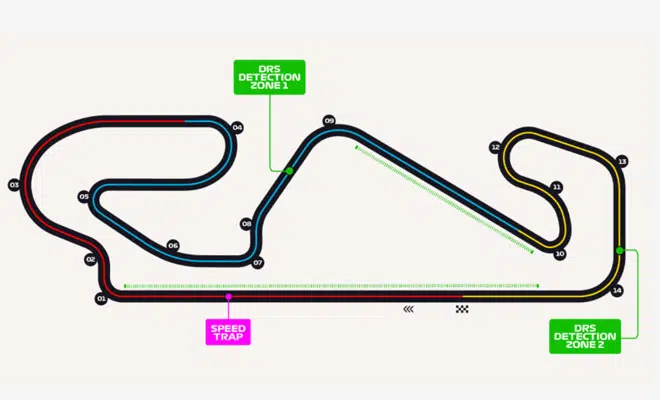The 2023 Circuit de Barcelona-Catalunya is scheduled for June 4th, marking the eighth Formula 1 weekend of the year. You can find the complete Formula 1 calendar for 2023 here. Teams and drivers could practically navigate the circuit with their eyes closed, as this track also hosted the winter tests. As in previous years, the racing action will unfold at the Circuit de Barcelona-Catalunya.

In operation since 1913, the Spanish Grand Prix Circuit de Barcelona-Catalunya features sixteen turns on its relatively short 4.655-kilometer layout. Renowned for its long sweeping turns, the track poses a significant challenge in terms of tire wear, particularly putting a strain on the left front tire. Drivers traverse the circuit clockwise, with the longest straight stretch featuring DRS providing the prime opportunity for overtaking. The subsequent medium-speed corners demand precise balance, while Sector 2 presents critical downhill braking points and another DRS-enabled straight. Traction becomes paramount in the final sector, characterized by slow turns, making tire preservation a crucial aspect of the race.
Max Verstappen made his Spanish Grand Prix debut in 2015, qualifying an impressive sixth in his Toro Rosso but unfortunately finishing outside the points. However, the following year marked his inaugural weekend with Red Bull, securing his first-ever victory after the Mercedes cars collided in the opening lap. Despite pressure from Kimi Raikkonen in the Ferrari, Verstappen remained composed, becoming the youngest race winner in history. While that feat may be hard to replicate, the Dutchman consistently leaves a strong impression in Barcelona. In both 2018 and 2019, he claimed a commendable third place with Red Bull. The following year, in 2020, Verstappen finished second in the race.
Spanish Grand Prix – Jerez
Attempting to revive the Spanish Grand Prix on a street circuit in the southwestern resort town of Fuengirola for 1984 and 1985 proved unsuccessful. However, in 1985, the Mayor of Jerez took the initiative to commission a new racing circuit in his town as a tourism and sherry promotion effort. The Circuito Permanente de Jerez, situated near Seville in southern Spain, was completed in time for the 1986 championship. This season witnessed an intense battle between Ayrton Senna and Nigel Mansell, culminating in a close finish where the two cars crossed the line side by side. Senna emerged victorious with a margin of 0.014 seconds, marking one of F1’s closest finishes.
In 1987, Mansell secured a win in his Williams, and in 1989, Senna strategically navigated the race to maintain his position in the championship points. He clinched the victory, fending off Austrian Gerhard Berger in a Ferrari and his fierce McLaren teammate, Frenchman Alain Prost. The 1990 event marked the final Spanish Grand Prix at Jerez, although the circuit later hosted the European Grand Prix in 1994 and 1997. During practice, Martin Donnelly’s Lotus was obliterated in a high-speed crash, ejecting the Briton from the car. Despite severe injuries, he survived, but never returned to Formula One racing. Jerez’s remote location and the lack of substantial crowds for the race, combined with Donnelly’s harrowing crash into Armco barriers, negatively impacted Jerez’s reputation, even though the circuit remained popular within the F1 community. Ferrari secured a one-two finish in the race, with Prost crossing the finish line ahead of Mansell.
Spanish Grand Prix F1 Spanish Grand Prix F1
You may also like – Monaco Grand Prix